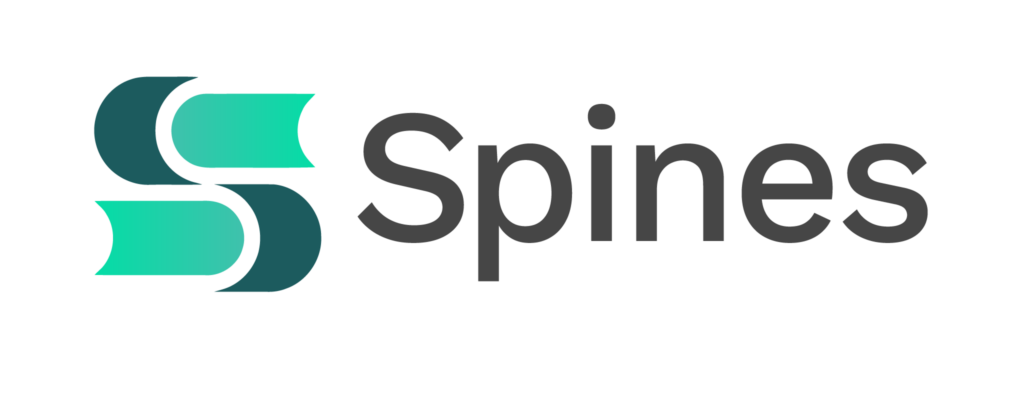Publishing a book is a dream for many authors, but the costs involved can often be daunting. From editing and cover design to marketing and distribution, expenses can quickly add up. However, with careful planning and the right approach, it’s possible to bring your book to life without breaking the bank.
In this article, we’ll explore budget-friendly strategies for authors, offering practical tips and insights to help you navigate the complex world of publishing. Whether you’re a first-time author or an experienced writer, these strategies will empower you to manage costs effectively and achieve your publishing goals.
The Self-Publishing Process
Self-publishing a book can be a rewarding journey, allowing authors to maintain creative control and directly reach their audience. Here’s a step-by-step guide to navigating this process effectively.
Step-by-Step Guide
1. Manuscript Preparation
Before you can self-publish, you need a polished manuscript. This involves several critical steps:
- Writing and Revising: Write your first draft, then revise it multiple times. Focus on plot development, character arcs, pacing, and overall structure.
- Beta Readers: Share your manuscript with beta readers. These individuals provide valuable feedback from a reader’s perspective, highlighting areas for improvement.
- Editing: Professional editing is crucial. Depending on your needs, this could include developmental editing, copy editing, and proofreading. This step ensures your manuscript is polished, coherent, and free of errors.
- Formatting Draft: Before final formatting, create a draft layout to visualize how your manuscript will appear in book form. This helps identify any remaining structural issues.
2. Choosing the Right Platform
Selecting the right platform is essential for the success of your book. Here are some popular options:
- Kindle Direct Publishing (KDP): Amazon’s platform is one of the most popular choices, offering a broad reach and various promotional tools. It supports both ebook and print-on-demand formats.
- Spines Publishing Platform: A budget-friendly option with competitive pricing for various services, including editing, cover design, and distribution. It’s a good choice for authors looking to minimize costs without sacrificing quality.
- IngramSpark: Known for its extensive distribution network, IngramSpark offers high-quality print options and global reach, making it ideal for authors looking for a wide distribution.
- Smashwords: This platform specializes in distributing ebooks to multiple retailers, including Apple Books, Barnes & Noble, and Kobo. It’s an excellent option for maximizing ebook reach.
- Lulu: Offers both print and ebook options with various customization features. Lulu is known for its high-quality print products.
When choosing a platform, consider factors like distribution reach, royalties, upfront costs, and the type of support services offered. Each platform has its strengths, so select one that aligns with your publishing goals.
Your Publishing Journey Awaits – Start Now3. Uploading and Formatting Your Book
Once your manuscript is ready and you’ve chosen a platform, the next step is to upload and choose the format for your book (print and ebook versions). This process ensures your book looks professional and meets industry standards.
Formatting for Ebooks:
- Tools: Use tools like Scrivener, Vellum, or Calibre for ebook formatting. These tools help convert your manuscript into formats like EPUB and MOBI.
- Guidelines: Follow the specific formatting guidelines provided by your chosen platform. Ensure your ebook has a clickable table of contents, proper indentation, and consistent styling.
Formatting for Print:
- Layout: Use software like Adobe InDesign or Microsoft Word to format your print book. Pay attention to details like margins, fonts, chapter headings, and page numbers.
- Cover Design: Create a print-ready cover, including the front, back, and spine. Ensure it meets the resolution and size specifications of your platform.
- Proof Copies: Order proof copies to review the physical book before final approval. This helps in catching any formatting issues or print errors.
Uploading Your Manuscript:
- Platform Interface: Use the publishing platform’s interface to upload your manuscript and cover files. Each platform has a step-by-step guide to assist you.
- Metadata: Enter essential metadata such as the book title, author name, keywords, and book description. This information helps with searchability and discoverability.
- Pricing and Rights: Set your book’s price and select the distribution channels. Ensure you understand the royalty structure and rights management options provided by the platform.
4. Final Steps
- Proofreading: Perform a final proofreading check to catch any last-minute errors.
- Launch Preparation: Plan your book launch strategy, including promotional activities, social media campaigns, and outreach to book reviewers and bloggers.
- Monitor and Update: After publishing, monitor your book’s performance. Use the platform’s analytics tools to track sales and reader feedback. Be prepared to update your book if needed, based on reviews or new information.
By following these steps, authors can effectively navigate the self-publishing process, ensuring their book is professionally prepared and positioned for success in the market
Self-Published Books: Print and Digital Versions
When self-publishing a book, authors must decide whether to publish a book in print, digital format, or both. Each option has its own set of advantages, costs, and distribution considerations. This section explores the nuances of print books and ebooks, providing guidance on print-on-demand services, distribution strategies, and the pros and cons of each format.
Print Books
Print-on-demand (POD) services have revolutionized the way physical books are produced. Unlike traditional printing, which requires large print runs, POD allows authors to print books as orders come in, reducing upfront costs and financial risk.
Cost: POD services typically involve minimal setup fees. Authors only pay for the actual printing and shipping of each book ordered. This model eliminates the need for large initial investments and inventory storage costs. However, the per-unit cost is higher compared to bulk printing.
Quality: Advances in POD technology have significantly improved print quality. Authors can choose from various options such as paperback or hardcover, different paper types, and color or black-and-white printing. While POD books are generally of high quality, there may be slight variations compared to offset printing used by traditional publishers.
Managing Print Book Distribution
Distributing print books effectively involves a combination of online and offline strategies:
Online Retailers: Platforms like Amazon’s Kindle Direct Publishing (KDP) and IngramSpark offer comprehensive POD services, including distribution to major online retailers such as Amazon, Barnes & Noble, and independent bookstores. These platforms handle printing, shipping, and customer service, making it easy for authors to reach a wide audience.
Independent Bookstores: Authors can approach local independent bookstores to stock their books. While this requires more effort and negotiation, it can be a valuable way to reach local readers and build community support.
Author Website: Selling directly from an author’s website can maximize profits by cutting out middlemen. This requires managing inventory and shipping but allows for greater control over sales and customer engagement.
Ebook Versions
Ebooks are a popular choice for most authors who self-publish due to their low production costs and wide distribution potential. Here’s how to create and distribute them effectively:
Creating Ebooks: Formatting ebooks involves converting your manuscript into digital formats such as EPUB and MOBI. Tools like Scrivener, Vellum, and Calibre can help streamline this process, ensuring that your ebook meets the formatting requirements of various platforms.
Distributing Ebooks: Major platforms like Amazon KDP, Apple Books, Kobo, and Smashwords offer extensive distribution networks. These platforms make it easy to upload, manage, and sell your ebook globally. Additionally, these services often provide marketing tools and promotional opportunities to help boost visibility.
Pros and Cons of Digital vs. Print
Pros of Ebooks:
- Lower Production Costs: Ebooks eliminate printing and shipping costs, making them more affordable to produce.
- Instant Distribution: Ebooks can be distributed and downloaded instantly, reaching a global audience quickly.
- Easy Updates: Authors can easily update and revise ebooks without incurring additional costs, ensuring the content remains current.
- Convenience for Readers: Ebooks are portable and can be read on various devices, appealing to tech-savvy readers.
Cons of Ebooks:
- Perceived Value: Some readers perceive physical books as more valuable than digital versions, potentially affecting sales.
- Digital Fatigue: With the increase in screen time, some readers may prefer the tactile experience of a print book.
- Piracy Risk: Ebooks are more susceptible to piracy, which can impact sales and author revenue.
Pros of Print Books:
- Tangible Product: Print books offer a physical, tactile experience that many readers cherish.
- Gifting: Print books are often preferred as gifts, making them a valuable addition to an author’s portfolio.
- Perceived Value: Physical books often carry a higher perceived value, which can justify a higher price point.
Cons of Print Books:
- Higher Production Costs: Printing, shipping, and storage costs can add up, especially with large print runs.
- Inventory Management: Authors need to manage inventory and logistics, which can be time-consuming and costly.
- Slower Distribution: Physical books require more time to distribute, particularly for international sales.
Both print and digital formats offer unique advantages and challenges. Authors should consider their target audience, budget, and personal preferences when deciding which format to pursue. By leveraging POD services for print books and utilizing major ebook distribution platforms, self-published authors can effectively reach readers and maximize their book’s potential in both markets.
Navigating the Publishing Industry
When it comes to publishing a book, authors have two primary paths to consider: traditional publishing or self-publishing. Each route has its own set of advantages and disadvantages, particularly concerning cost, control, and royalties. Understanding these differences is crucial for authors to make informed decisions about which path to pursue.
Your Publishing Journey Awaits – Start NowTraditional Publishing vs. Self-Publishing: Differences in Cost, Control, and Royalties
Cost:
Traditional Publishing: In traditional publishing, the publisher bears most of the financial burden. They cover the costs of editing, cover design, formatting, printing, and marketing. This means the author incurs minimal upfront expenses. However, the path to securing a traditional publishing deal often involves costs related to finding and hiring a literary agent.
Self-Publishing: Authors who choose to self-publish must cover all production costs themselves, including editing, cover design, formatting, and marketing. While this means a higher initial investment, authors have the flexibility to control their budgets and make cost-effective choices.
Control:
Traditional Publishing: Authors who choose traditional publishing generally relinquish a significant degree of creative and business control. Publishers have the final say on major aspects of the book, including the cover design, title, and marketing strategy. This can sometimes lead to conflicts if the author’s vision differs from the publisher’s.
Self-Publishing: Self-publishing offers authors complete control over every aspect of their book. They make all the decisions, from the cover design to the marketing approach. This autonomy allows authors to stay true to their vision and make changes quickly if needed.
Royalties:
Traditional Publishing: Royalty rates in traditional publishing are typically lower compared to self-publishing. Authors might earn around 10-15% of the book’s retail price, and advances are often recouped before royalties are paid out. However, traditional publishers provide broader distribution channels and marketing support, which can lead to higher overall sales.
Self-Publishing: Authors generally earn higher royalties, often between 70-80% of the book’s retail price, especially for ebooks. Despite the higher royalties, authors must handle all aspects of marketing and distribution themselves, which can impact overall sales potential.
How Self-Publishing Fits into the Broader Publishing Industry
Self-publishing has transformed the publishing landscape, offering an alternative route for authors to reach readers without the need for traditional gatekeepers. This shift has democratized the industry, allowing a diverse range of voices to be heard.
Market Share: Self-publishing now accounts for a significant portion of the book market, particularly in the ebook segment. Platforms like Amazon Kindle Direct Publishing (KDP), IngramSpark, and Smashwords have made it easier for authors to publish and distribute their books worldwide.
Innovation: The rise of self-publishing has spurred innovation within the industry. Authors are experimenting with new genres, formats, and marketing techniques. This has led to a more vibrant and diverse literary landscape.
Hybrid Authors: Many authors now pursue a hybrid approach, combining traditional and self-publishing methods. This allows them to leverage the strengths of both paths, using traditional publishing for certain projects while self-publishing others.
Choosing the Right Path
Deciding whether to self-publish your book or go the traditional route depends on various factors, including an author’s goals, resources, and preferences. Here are key considerations to help make an informed choice:
1. Creative Control: If maintaining full creative control is important, self-publishing might be the better option. Authors who value the ability to make decisions about every aspect of their book will find self-publishing more appealing.
2. Financial Investment: Consider the initial financial outlay. Self-publishing requires upfront investment in production costs, whereas traditional publishing shifts these costs to the publisher. Authors should evaluate their budget and willingness to invest in their project.
3. Time to Market: Traditional publishing often involves lengthy timelines, including finding an agent, securing a deal, and going through the publisher’s production schedule. Self-publishing can be much faster, allowing authors to bring their books to market quickly.
4. Marketing and Distribution: Traditional publishers offer extensive marketing and distribution networks, which can be advantageous for reaching a wide audience. Self-publishing means that authors need to develop their own marketing strategies and may find it challenging to achieve the same level of exposure.
5. Royalty Rates: Consider the potential earnings from each path. While traditional publishing offers lower royalty rates, it can provide a broader reach. Self-publishing offers higher royalties but requires effective marketing to maximize sales.
6. Long-Term Goals: Think about long-term career goals. Authors who aim to build a brand and have multiple works might benefit from the hybrid approach, leveraging the strengths of both traditional and self-publishing.
Both traditional and self-publishing have their own sets of benefits and challenges. Authors must weigh these factors carefully, considering their personal goals, resources, and the nature of their book. By understanding the intricacies of each path, authors can make an informed decision that best suits their publishing aspirations.
Marketing and Sales Strategies
Successfully marketing a self-published book requires a strategic approach that builds an author platform, leverages online retailers, and partners with independent bookstores. This section outlines essential strategies for creating a strong online presence and maximizing book sales.
Building Your Author Platform
An author platform is the foundation of your book marketing efforts. It encompasses your online presence, including your website, social media profiles, and other channels through which you interact with your audience. Here’s why these elements are crucial:
Author Website:
- Professional Hub: Your website serves as a central hub where readers can learn more about you and your books. It should include a blog, a biography, information about your books, and contact details.
- SEO Benefits: A well-optimized website improves your visibility in search engine results, helping potential readers find you easily.
- Sales Channel: Direct sales from your website can increase your profits, as you avoid middleman fees from retailers.
- Brand Building: A professional, well-designed website enhances your credibility and establishes your brand as an author.
Social Media Presence:
- Engagement: Platforms like Facebook, Twitter, Instagram, and LinkedIn allow you to engage directly with readers, share updates, and build a community around your work.
- Promotion: Social media is an effective tool for promoting book launches, giveaways, and other events. It helps in spreading the word about your book to a broader audience.
- Networking: Connect with other authors, influencers, and industry professionals to expand your network and gain valuable insights and opportunities.
Utilizing Email Marketing and Newsletters
Email marketing is one of the most effective tools for engaging with your audience and promoting your books. Here’s how to use it effectively:
Your Publishing Journey Awaits – Start NowBuilding an Email List:
- Subscription Incentives: Offer a free chapter, short story, or exclusive content to encourage readers to subscribe to your mailing list.
- Sign-Up Forms: Place sign-up forms prominently on your website, blog, and social media profiles to capture email addresses.
Crafting Newsletters:
- Content: Share valuable content such as writing tips, book recommendations, and behind-the-scenes insights. Regular updates about your writing progress and upcoming releases keep readers engaged.
- Personalization: Personalize your emails to make your subscribers feel valued. Use their names and segment your list to send targeted messages.
- Call-to-Action: Include clear calls-to-action (CTAs) in your emails, encouraging readers to buy your book, leave reviews, or share your content.
Leveraging Online Retailers and Independent Bookstores
Maximizing sales involves leveraging both online retailers and physical bookstores. Here’s how to approach each channel effectively:
Online Retailers:
- Amazon Kindle Direct Publishing (KDP): Optimize your book listing with a compelling book description, relevant keywords, and professional cover design. Utilize Amazon’s promotional tools like Kindle Countdown Deals and Kindle Unlimited.
- Other Platforms: Distribute your ebook through multiple platforms such as Apple Books, Kobo, and Google Play to reach a broader audience. Services like Smashwords and Draft2Digital can help with wide distribution.
Print Books:
- Print-on-Demand (POD): Use POD services to make your print book available on major online retailers like Amazon and Barnes & Noble without the need for large upfront investments.
- Pre-Orders: Offer pre-orders to generate buzz and secure early sales. This can improve your book’s ranking on release day, enhancing its visibility.
Partnering with Independent Bookstores
Independent bookstores can be valuable partners in promoting and selling your print books. Here’s how to build these partnerships:
Approaching Bookstores:
- Professional Presentation: Prepare a professional presentation, including a press kit with your book’s cover, blurb, and author bio. Personalize your pitch to each bookstore, highlighting why your book would appeal to their customers.
- Consignment Deals: Many independent bookstores offer consignment deals where they take a percentage of the sales. This reduces their risk and can help get your book on their shelves.
Events and Signings:
- Book Signings: Organize book signings and readings at local bookstores to engage directly with readers. Promote these events through your website, social media, and email newsletter to attract attendees.
- Workshops and Panels: Offer to host workshops or participate in panels and author events. This increases your visibility and establishes you as an expert in your genre.
Collaborative Promotions:
- Cross-Promotion: Collaborate with bookstores for cross-promotion. They can feature your book in their newsletters and social media, while you promote their store to your audience.
- Local Media: Reach out to local media to cover your bookstore events. This can attract more attendees and generate publicity for both your book and the store.
Maximizing Exposure and Sales
To maximize exposure and sales, combine these strategies:
- Consistent Branding: Ensure your branding is consistent across all platforms, including your website, social media, and promotional materials.
- Reader Reviews: Encourage satisfied readers to leave reviews on Amazon, Goodreads, and other platforms. Positive reviews boost credibility and attract new readers.
- Advertising: Invest in targeted advertising on platforms like Facebook, Amazon, and BookBub. These ads can reach potential readers who are likely to be interested in your genre.
Building a robust author platform and leveraging multiple sales channels is essential for successfully marketing a self-published book. By creating a professional online presence, engaging with readers through email marketing, and partnering with online retailers and independent bookstores, authors can maximize their book’s reach and sales potential. These strategies, when implemented effectively, will help authors through the self-publishing process, to achieve their marketing goals and build a loyal readership.
The Role of Book Reviews and Beta Readers
Feedback is crucial to refining a manuscript and ensuring it resonates with readers. Two key sources of feedback in the self-publishing process are beta readers and book reviews. Both play distinct roles and provide valuable insights that can significantly enhance the quality and marketability of a book.
Importance of Beta Readers in the Writing Process
Beta readers are individuals who read a manuscript before it is published to provide constructive feedback. Unlike professional editors, beta readers are typically regular readers who represent the book’s target audience. Their feedback is invaluable for several reasons:
- Early Insights: Beta readers provide early insights into the story, helping identify issues with plot, pacing, character development, and overall readability. They can point out confusing sections, inconsistencies, or elements that may not resonate well with the target audience.
- Audience Perspective: Since beta readers are part of the target audience, their feedback reflects how potential readers might respond to the book. This helps authors make necessary adjustments to better meet reader expectations.
- Diverse Opinions: Engaging a diverse group of beta readers ensures a broad range of perspectives, helping authors address various aspects of their manuscript that they might not have considered.
How to Get Honest Reviews and Use Them to Improve Your Book
Honest reviews from readers who have purchased or received a copy of the book are crucial for both pre-launch improvements and post-launch credibility. Here’s how to effectively gather and utilize these reviews:
1. Identifying Beta Readers:
- Writing Communities: Join writing communities and forums where you can find beta readers willing to provide feedback in exchange for a free copy of your manuscript.
- Social Media: Use social media platforms to connect with readers who might be interested in becoming beta readers. Announce the opportunity on your author pages and groups related to your genre.
- Existing Networks: Reach out to your existing network of friends, family, and colleagues who enjoy reading and ask if they would be willing to serve as beta readers.
2. Encouraging Honest Reviews:
- Advance Reader Copies (ARCs): Send out ARCs to book bloggers, reviewers, and influencers in your genre. Encourage them to provide honest reviews on platforms like Amazon, Goodreads, and their own blogs.
- Review Requests: Politely request reviews from readers who have expressed enthusiasm about your book. Explain that honest reviews help improve your work and assist other readers in making informed decisions.
- Follow-Up: After providing a copy of your book, follow up with readers to remind them to leave a review. Be courteous and appreciative of their time and effort.
3. Using Feedback for Improvement:
- Analyze Reviews: Carefully read and analyze reviews to identify common themes and constructive criticism. Look for patterns in the feedback that point to specific areas needing improvement.
- Make Revisions: Use the feedback to make necessary revisions to your manuscript. This might include refining the plot, enhancing character development, or addressing any structural issues.
- Continuous Improvement: Even after publication, continue to gather feedback and consider updates for future editions or subsequent books. This ongoing process helps you grow as an author and produce higher-quality work over time.
By effectively utilizing beta readers and encouraging honest reviews, authors can gain invaluable feedback to refine their manuscripts and enhance their books’ overall quality. These strategies not only improve the final product but also build a foundation of trust and credibility with readers, which is essential for long-term success in the self-publishing industry.

Spines Publishing Platform
Spines Publishing Platform is an innovative and budget-friendly option for authors who want to self-publish and are looking to navigate the publishing process efficiently and cost-effectively. With a focus on providing comprehensive services at competitive prices, Spines offers a range of tools and resources designed to help authors bring their books to market without breaking the bank.
Spines stands out in the crowded self-publishing market due to its affordability and comprehensive service offerings as well as their fast publishing timeline of 30 days or less. It caters to authors who need professional support in editing, cover design, formatting, and distribution, ensuring that even those with limited budgets can produce high-quality books.
Services Offered by Spines
Spines offers a variety of services tailored to meet the needs of authors. Here’s an overview of their pricing and services:
Editing Services: Spines provides professional editing services, including developmental editing, copy editing, and proofreading. These services are essential for ensuring your manuscript is polished and free of errors.
Cover Design: Spines helps to create the best cover designs for your book using AI-enhanced technology. The process starts by taking your entire manuscript and summarising it to generate book covers based on a database of thousands of successful books in your specific genre.
Formatting: Spines offers formatting services for both print and digital versions of your book. This includes interior layout design for print books and conversion to ebook formats like EPUB and MOBI.
Distribution: Spines handles distribution to major online retailers, including Amazon, Barnes & Noble, and Apple Books. They also offer print-on-demand services, reducing upfront printing costs and inventory management hassles.
Pricing
Spines offers a transparent pricing structure designed to be affordable for self-published authors. The latest pricing information:
Basic Package: Starting at just $49/month for 24 months or a single payment of $1,200, this package includes essential services such as formatting for print and ebook, basic cover design, and distribution and includes copyright protection and 1x IBSN. Authors will also have a dedicated project manager to guide them through the process. Suitable for books up to 50,000 words (about 200 pages).
Standard Package: Priced at $99/month for 24 months or a one-time total of $3,000, this package adds comprehensive editing services as well as Hardcover and eBook formats, x3 ISBN, and an increased word limit of up to 100,000 words (about 400 pages).
Premium Package: At $169/month for 24 months or a one-off payment of $5,000, the premium package includes all services from the standard package, plus audiobook creation, professional cover design, professional proofreading services, and x4 ISBN, as well as a word limit of up to 150,000 words (about 600 pages).
You can find more about Spines’ pricing in this article.
Why Spines is a Good Option for Self-Published Authors
Spines is an excellent choice for several reasons:
1. Affordability: The competitive pricing structure ensures that authors can access professional services without substantial financial outlay, making high-quality self-publishing accessible to more writers.
2. Comprehensive Services: Spines offers a full suite of services, from editing and cover design to formatting and distribution. This one-stop-shop approach simplifies the publishing process, saving authors time and effort.
3. Quality: Despite its affordability, Spines does not compromise on quality. Their professional team ensures that every aspect of your book meets industry standards, enhancing its appeal and marketability.
4. Support: Spines provides robust customer support, helping authors navigate the complexities of self-publishing. Their priority customer service in the premium package ensures that authors receive timely and effective assistance.
5. Flexibility: With multiple packages and customizable options, Spines caters to the diverse needs of authors, allowing them to choose the level of service that best fits their specific requirements and budget.
Spines Publishing Platform offers a budget-friendly, high-quality option for self-published authors. Its comprehensive services, competitive pricing, and commitment to quality make it an attractive choice for writers looking to publish their books professionally without incurring prohibitive costs. Sign up for free to start your journey today.
Navigating the Cost of Publishing: Final Thoughts and Encouragement
Navigating the cost of publishing can be a daunting task, but with careful planning and strategic decision-making, authors can successfully bring their books to market without breaking the bank. Throughout this article, we’ve explored various aspects of the self-publishing process, offering budget-friendly strategies to help authors manage expenses effectively.
While the journey for authors who self-publish, it is also highly rewarding. It provides authors with complete control over their work, higher royalty rates, and faster time-to-market compared to traditional publishing. By adopting the strategies discussed, aspiring authors can navigate the financial landscape of publishing with greater confidence.
In conclusion, self-publishing is a viable and increasingly popular option for authors looking to bring their work to a global audience. By carefully managing costs and leveraging available resources, authors can produce high-quality books that stand out in the competitive publishing market. Pursuing self-publishing not only allows for creative freedom but also empowers authors to share their stories with the world on their own terms. Embrace the journey, and use the strategies outlined in this article to achieve your publishing goals successfully.
Your Publishing Journey Awaits – Start Now






